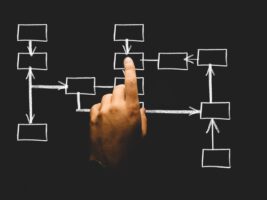The visual data stream coming from the eyes is first emotionally evaluated by the older regions of our brain before it reaches the higher areas capable of consciousness. As a result, our emotional body state involuntarily adjusts to the instinctively meaningful content of the environmental situation. These include the potential for danger and the potential for satisfying our basic physical needs. The dynamics of change in the environment are usually far too fast and too complex for the rational means at our disposal. If you want to think before you act, you need enough time to do so. The function of our emotions and feelings offers us an orientation and action aid in environmental situations whose complexity exceeds our temporal or cognitive possibilities. Emotions and feelings serve our survival.
The first emotional evaluation of the visual data takes place in the brain stem after around 100 milliseconds. By contrast, our cortex needs several seconds before we can consciously perceive something visually. This is why we no longer see any content in a sequence of images in a time cycle of less than one second, even though we react to them emotionally. The release of hormones puts the entire body in a state of emotional arousal, which can trigger feelings such as fear, love, hate, affection or violence. We are therefore not in a position to view people, places and things free of emotions and feelings or even in a value-neutral way.
Our attention is involuntarily drawn to important events long before we have seen their significance and linked them to our situation. However, it is not only our awareness of our attention and our interests in our surroundings that are significantly influenced by emotions and feelings, but also the content we perceive. The evolutionary function of our feelings and emotions is the key to understanding intuition or “gut feeling”. Our emotions and feelings are not irrational, but form facts that significantly influence the process of vivid perception, imagination and representation.


